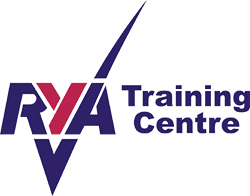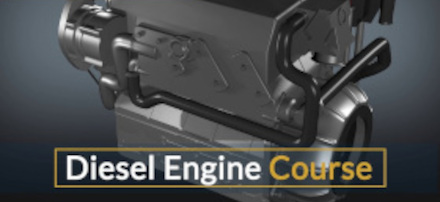RYA Yachtmaster Offshore FastTrack
This fantastic all in one course combines the Day Skipper and Coastal Skipper/Yachtmaster courses into one complete program. It is has been designed for both those with no formal navigation training but plenty of onwater experience, and for those with minimal or rusty knowledge of navigation and seamanship to get to the RYA Yachtmaster Certificate of Competency quickly. This course covers the entire theory syllabus required for the RYA yachtmaster offshore program.
The course streamlines the content and removes the duplication that occurs between the Day Skipper and Yachtmaster theory course and takes you initially through the foundational parts of Day Skipper to develop solid
fundamental knowledge and skills before building on these for the more advanced concepts that form the RYA Coastal Skipper / Yachtmaster Offshore theory.

Certification:
- RYA Coastal Skipper /
Yachtmaster Offshore Theory Certificate
$745 AUD inc GST.
- Online E-Learning program with immediate access.
- 65 hours of study plus Exercises and Exams.
- No prior experience required.
- RYA Southern Hemisphere syllabus designed specifically for Australia, new Zealand, South East Asia, the Pacific and Africa.
- Animated demonstrations of Navigation Practices.
- Interactive simulators for Radar skills, VHF operations and the Electronic Chart Plotter
- Course Pack sent directly to you.
- Included commercial standard Plotter & Dividers.
- RYA Instructor Support for all your questions.
- Private VC tutorials available.
- 6 Months course access with extension options.
- Bespoke, practical supplementary course material for Australia and South Pacific Weather Patterns.
Add to Your Course

Add the Navathome Australia Diesel Engine course to your enrolment to get a 10% discount on the total course costs..
Who is this course for?
This course is ideal for anyone looking to progress to achieving the yachtmaster qualification or wants to be certain of the skills for extended passages.
The focus of the course is to prepare you for navigating in waters, as well as entering or departing ports that are unfamiliar to you or your crew. This course is the perfect course for those looking to go to sea and discover new places.
- Skippers wanting to master their knowledge.
- Navigation in areas with complex passages or large tidal movements.
- Long distance overnight passages lasting several days.
Course Pre-Requisites:
This level course does require some degree of boating knowledge to start. Ideally you would have spent some time on the water crewing for someone of even skippering your own boat mastering the elementary parts.
- Boating Experience- ideally with some real world attempts at navigation
- Basic addition and subtraction maths.
The Day Skipper aspect of the course is not assessed but rather designed to quickly get you up to speed on basic seamanship, chart work and tides. Following the Day Skipper module, students then progress to the full Yachtmaster Shorebased
theory course which covers all aspects of the Yachtmaster syllabus.
What the course covers:
- General Seamanship.
- Parts of the boat.
- Securing the boat on the dock.
- Preparation for Sea.
- Sailing Knots.
- Anchoring Techniques.
- Basic Sailing Concepts.
hide
- Vessel Safety Requirements.
- Safety Briefings.
- Sea Survival Equipment.
- Vessel Stability.
- The impact of weather on safety.
- Emergency Response.
- Mayday, Rescue, and Abandon Ship.
- Actions in Limited visibility.
hide
- Interpreting Marine Weather Forecasts.
- Pressure Systems and Weather Patterns.
- Observation of Weather Systems.
- Understanding Local Weather Effects.
- The Impact of Weather on Safety.
- Using Onboard Instruments to Predict Weather.
hide
Charts are the key tool used in navigation. All jurisdictions require vessels to have current official charts. These can be electronic or paper, but did you know that most electronic charts are not official?.
- Use of the Compass, Variation and Deviation Compensation.
- Position Fixing with Latitude and Longitude.
- Verification of the Current Validity of charts, Manage Updates and Corrections.
- Chart Plotting Skills.
- Understandig the difference between official and un-offical electronic navigation charts.
- Esing Electronic charts for postion verification and course to steer.
We will teach you how to use the plotter and dividers so you can be certain where you are every time. These tools are the link between the chart, a GPS and the real world.
hide
The effects of tide will push you off course. An effective navigator can use the tools available to compensate for the tide in advance and allow you to steer a shorter, faster course. A GPS will only tell you to compensate after you have gone off course.
- Identification of Tidal Stream Information.
- Determining the effect of Leeway and Tide, and compensation techniques.
- Plotting ground track and water track on a chart.
- Adjusting for variation and deviation with Course to Steer adjustments.
- Plotting course to steer on electronic charts and interactive feedback on your process.
hide
Tidal rates change through out the tidal movement and through out the lunar cycle. An RYA Yachtmaster needs to be able to accurately work out the impact and compensate for the effects of tide when navigating, anchoring, and thorugh close quarters pilotage.
- Understanding the mechanism that causes tides to occur.
- Understanding Tide Tables.
- Identification of Tidal Streams
- Working with Tidal Diamonds and the Tidal Stream Atlas.
- The difference in tidal behaviour between springs and neaps conditions.
- Electronic tidal height calculations.
- Graphical based tidal height caclulations.
- Interactive online tidal curve calculator with itneractive feedback.
- Applying tidal constraints on passage planning.
- Secondary port calculations.
Cumulatively you will be able to predict the impact of tidal movements throughout your journey, offset your course to account for the tidal stream, plan a course that safely accounts for the height of tide, and consideration
for the height of tide for departure and arrival times.
hide
- The use of leading lines and lights.
- Using dipping distances to determine range.
- Recognition of different navigation aids and their purpose.
- Identification of differnet Nav Aid Symbols on a chart and chartplotter.
hide
Safe and planned navigation is one of the most fundamental principles of being a yachtmaster.
- Position Fixing using Landmarks, Navigation Aids, and natural features.
- Compensation for variation and deviation on Position Fixing, and Course to Steer.
- Determining Estimated position, and the circle of error.
- Impact of Hazards and weather on your passage.
- Planning ports of refuge.
hide
Nothing has changed navigation like the advent of satellite navigation systems, and affordable radar. But our over reliance on them mean we have lost awareness of the shortfalls and vulnerabilities of this technology. Your electrical system could fail, GPS signals could be compromised, or you may just make a simple error and not realise it.
- The basics of an electronic chart plotter.
- Basic Radar Operation using the NAVatHOME radar simulator.
- Safe & practical use of satellite navigation.
- Validation of Satellite navigation systems such as GPS.
- AIS - Automatic Identification System.
- Management & upgrades of Electronic charts
- Passage Planning with an Electronic chart plotter.
- Electronic Instruments.
- Electronic System Security.
hide
As of 2002, SOLAS requirements changed internatioanlly to require the skippers of all leisure vessels to make a passage plan of an intended voyage before leaving the dock. It is recognised as a fundamental aspect of the vessels safety.
- Requirements of a passage plan.
- Execution of a passage plan.
- Crew management & watchkeeping.
- Development of close quarters pilotage plans.
- Understanding pilotage techniques.
- Restricted visibility pilotage.
- Transits, clearance lines.
- Harbour Requirements.
- Electronic Passage Planning.
- Download pilotage plan templates to use on your own boat.
Ultimately you will be able to put together a complete passage plan and pilotage plan with consideration for ports of refuge, weather and emergency response plans.
hide
- Understanding international rules of the road.
- Required action to avoid a collision.
- Definition of limited visibility and impact on the interpretation of collision regulations.
- Stand on and give way in complex scenarios.
- Traffic Separation Schemes.
- Marine Clearance areas.
- Vessel Day Shapes.
- Sound Signals - including those in restricted visibility.
- Recognition of a vessel from its ship lights.
- What signals are you required to show.
hide
How is the course delivered?
The course is provided using the world class NAVatHOME RYA accredited training program.
Support and Extras
Through out your course, you will be supportedby one of the NAVatHOME RYA accredited instructors. Throughout the course, students will have full access to all NAVatHOME supporting resources and access to the international Navathome support network if you are planning an overseas trip.
- Knots
- Glossary
- Buoyage
- Collision Regulations
- Vessel Lights & Flip Cards
- Interactive VHF radio Simulator
- Interactive Radar Simulator
- Interactive Chart Plotter Simulator
- Interactive Online Charts
The NAVatHOME Interactive Radar Simulator. Includes the normal features for recreational use.
All elements of the DaySkipper and Coastal Skipper are covered in this course. This course will cover information that even experienced skippers may not have been exposed to before.
The RYA syllabus ensures that all Yachtmaster graduates has been exposed to common navigation practices around the world, and techniques that have been proven in use over thousands of sea miles by its members and students. To be awarded
an RYA Yachtmaster is to attain one of the highest standards that can be given to a recreational sailor.
Enrol Now
Each course comes with 6 months access with the opportunity to renew at any time, and online support with an RYA Yachtmaster instructor ready to help with any questions. Course extensions cost $60 for an additional 6 months.